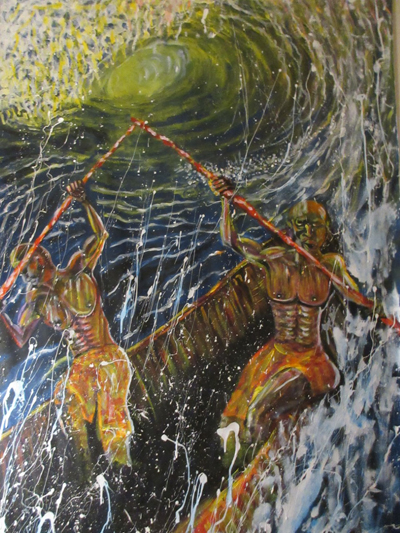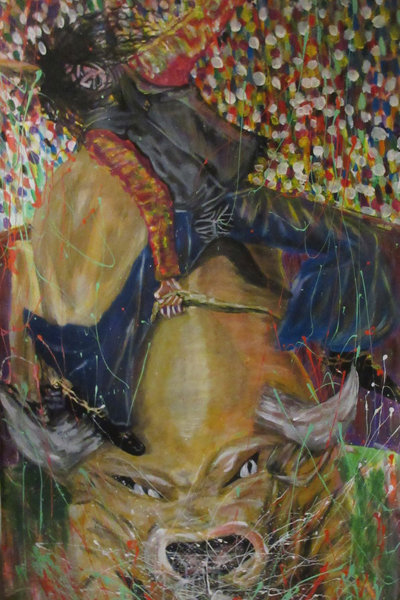s w i f t s & s l o w s: a quarterly of crisscrossings
An excerpt from 17 North
Glenn Cox & E. Merwin
←back or next→
17 North is a full-length drama based on Glenn Cox’s oral history recounting the final years of his bid from 2004-2008 in Hudson Correctional Facility.
O.T: Wherever I am, I thrive. Not survive. Thrive. Upstate I did welding, plumbing, blueprints, even milked cows in Orleans. But any real money I made in prison was from my artwork.
AVI: They let you do art in prison?
O.T: Let me? Please. I had officers coming to me for my art. In Otisville there was a kid that taught me how to do my portraits on t-shirts. Once I mastered that, people were coming to me to do rappers, their Bentleys, their Ducati motorcycles. Wherever I went, my art sustained me. Then when I got to Hudson they gave me a job in the woodcraft department, and I met this guy, white guy, good dude, man, and he used to stretch my canvasses for me. I’d hit him off with a pack of cigarettes, and he’d make me four good size canvasses from one bedsheet.
Historical Note: Before Hudson Correctional Facility incarcerated men, it had a long and violent history of incarcerating and abusing women and girls 12-16. In 17 HUDSON O.T. tells their history as he learned it while an inmate—having found and read the logbooks that documented their abuse, cleaned out the attic where their prison dresses were still stored and the basement rooms where they were brutalized. From the window of his cell, he could see the cemeteries where the girls and their babies were buried.
According to investigative journalist Nina Bernstein, “The institution of Hudson near Albany, had opened in 1887 as The House of Refuge for Women… discipline meant solitary confinement on bread and water, shackles and beatings.” (Bernstein, Ward of the State) From the accounts of many of the Hudson staff whose families had lived and worked at the facility for generations, author Glenn Cox learned of the routine rapes that resulted in abortions and the death of the girls who were buried on the grounds where “there were weathered markers, and no epitaphs, only girls’ names fading from bare limestone. Lizzie French. Nellie McGovern. Anna Schabesberger. Julia Coon. Mary O’Brien. Jennie Fuller. Barbara Decker. Annie Whithey. Helen Peer.” (Bernstein, The Lost Children of Wilder: The Epic Struggle of Foster Care, 2001)
←back or next→
You can read the complete play here→
Glenn Cox, who for nearly a decade earned his livelihood singing below ground and at gigs around the city, but when MTA ridership plummeted, Cox was driven above ground and behind closed doors—caught up in the throes of creative chaos. A force which he had experienced before in 1992 when a wrongful conviction of murder had forced him upstate to serve 17 years in Attica, Orleans, Otisville and Hudson Correctional Facilities, or as he calls them plantations. “They lock you up. They put you in shackles, You’re made to labor for fifteen, twenty-five cents an hour…. All prisons are, are nothing but plantations.” For seventeen years he painted portraits and commissions for inmates, officers and civilians.
E. Merwin resumed playwriting after having written over 20 children’s books for Bearport Publishing. In 2020 Her first play Night of the Pukas won a Writers Digest Award and will be produced next summer on Governor’s Island in NYC. When the pandemic hit, she and coauthor Glenn Cox began recording his oral history and weaving those stories into a full-length drama.
To learn more→


